| Home » Categories » Multiple Categories |
How to Setup Tiki Wiki on Ubuntu 12.10 |
|
Article Number: 245 | Rating: Unrated | Last Updated: Tue, Sep 23, 2025 at 11:10 PM
|
| Tiki Wiki is an easy to use content management system written in PHP, that can be used to create forums, blogs, file and image galleries, and so on. To begin we will spin up a Ubuntu 12.10 x64 cloud server: 
Step 1 - Install LAMP stackexport DEBIAN_FRONTEND=noninteractive apt-get -y install apache2 mysql-server mysql-client php5 php5-mysql php5-gd Step 2 - Create a Database and User for Tiki WikiMake sure to replacePassWordwith your own value below: mysqladmin create tiki mysql -Bse "create user 'tiki'@'localhost' identified by 'PassWord';" mysql -Bse "grant all privileges on \`tiki\`.* to 'tiki'@'localhost';" mysqladmin flush-privileges Step 3 - Download Tiki Wikicd /root wget "http://downloads.sourceforge.net/project/tikiwiki/Tiki_10.x_Sun/10.2/tiki-10.2.tar.gz" tar xvfz tiki-10.2.tar.gz rm -rf /var/www/* && cp -Rf /root/tiki-10.2/* /var/www/ Step 4 - Install Tiki WikiYou can press Enter for all of these questions: cd /var/www bash setup.sh 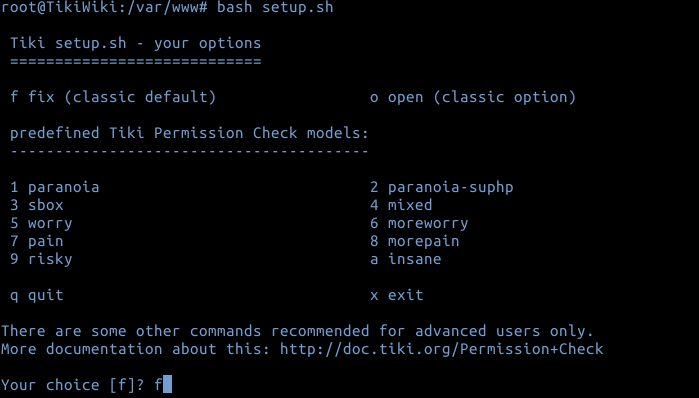 Now you would need to proceed with installation from browser. Navigate over to your cloud server's IP /tiki-install.php (http://198.199.88.201/tiki-install.php in our case): 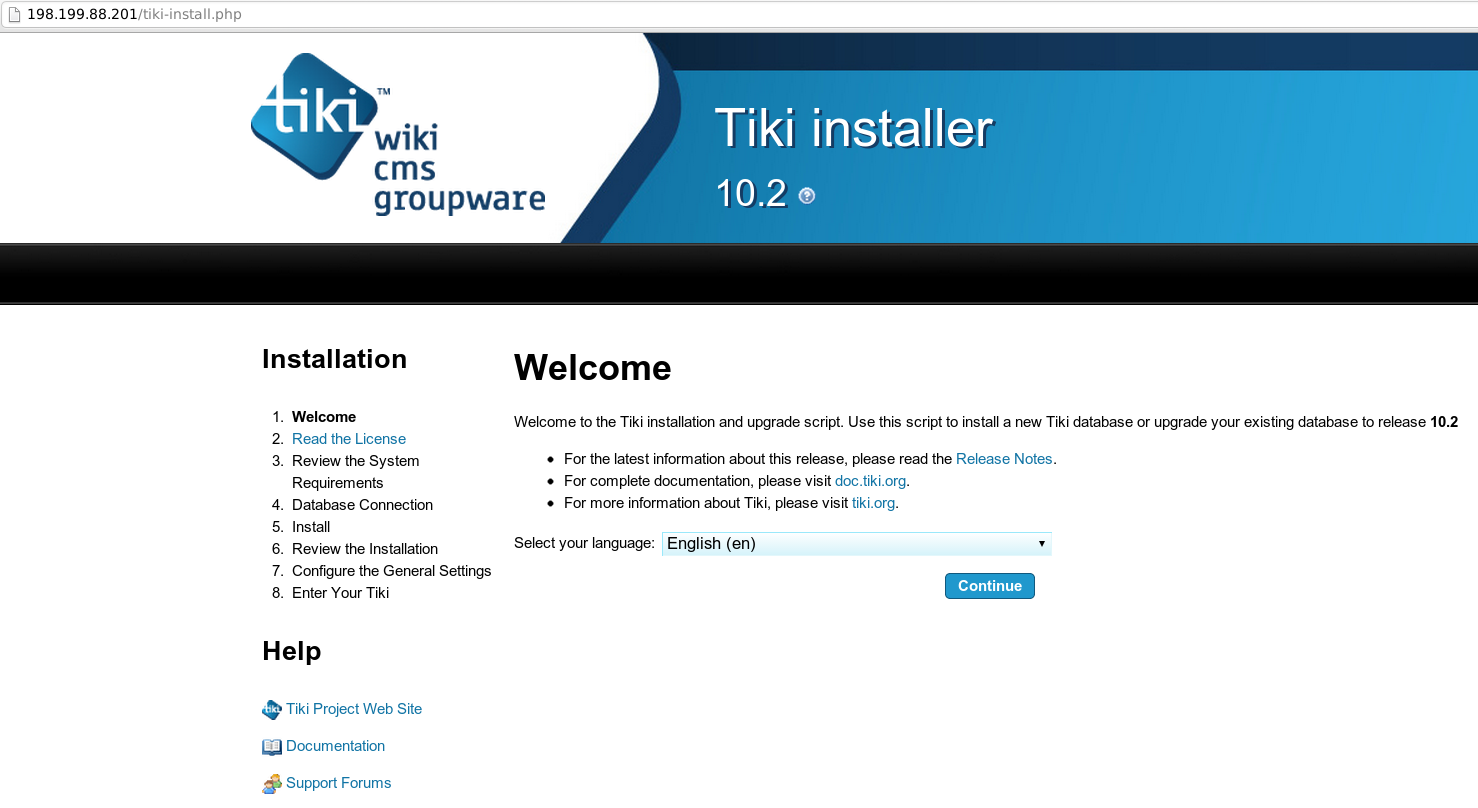 Hit Continue, Accept License Agreement, and once you get to Database settings, put the following credentials: Database type: MYSQL improved (mysqli) Host name: localhost Database name: tiki User name: tiki Password: PassWord (or one you specified in Step 2 above) 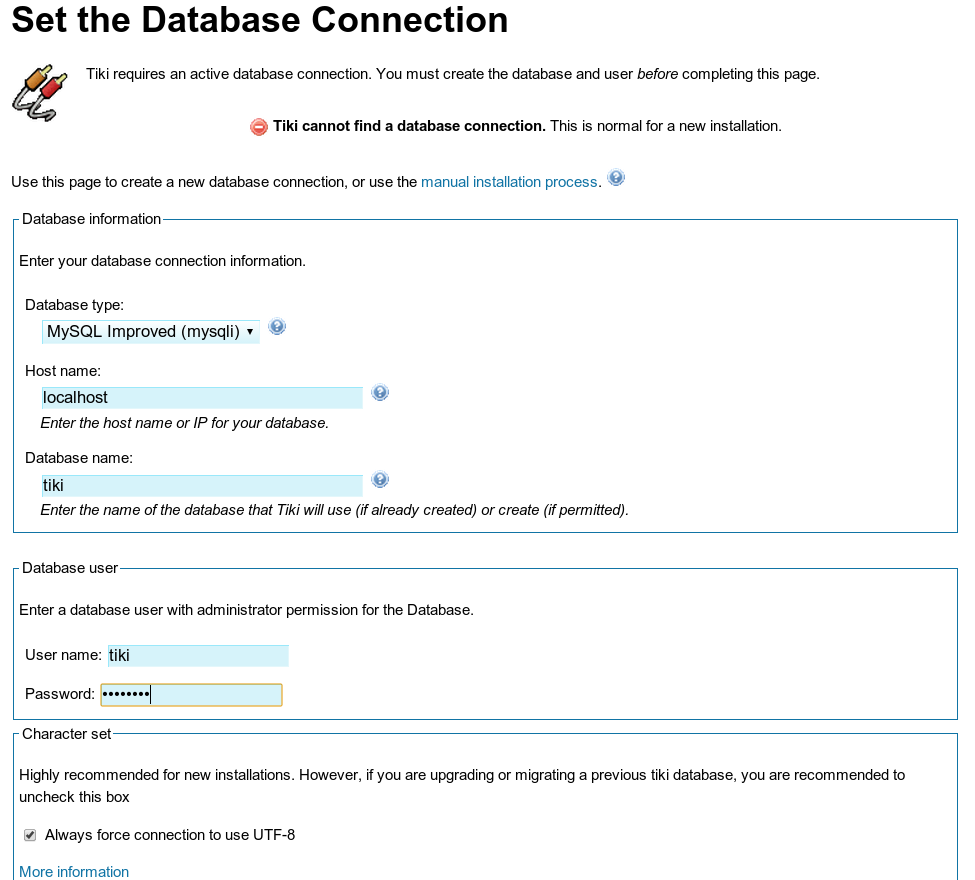 For database type, select InnoDB: 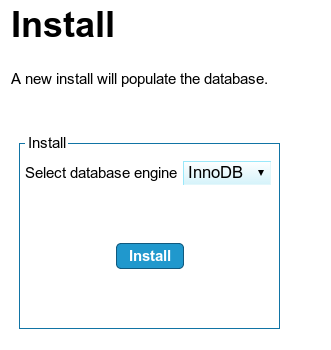 Note that the default username is admin and password is admin  Select whether you want to use HTTPS (SSL), enter your e-mail, and selectVisible To Admin Onlyfor PHP error reporting: 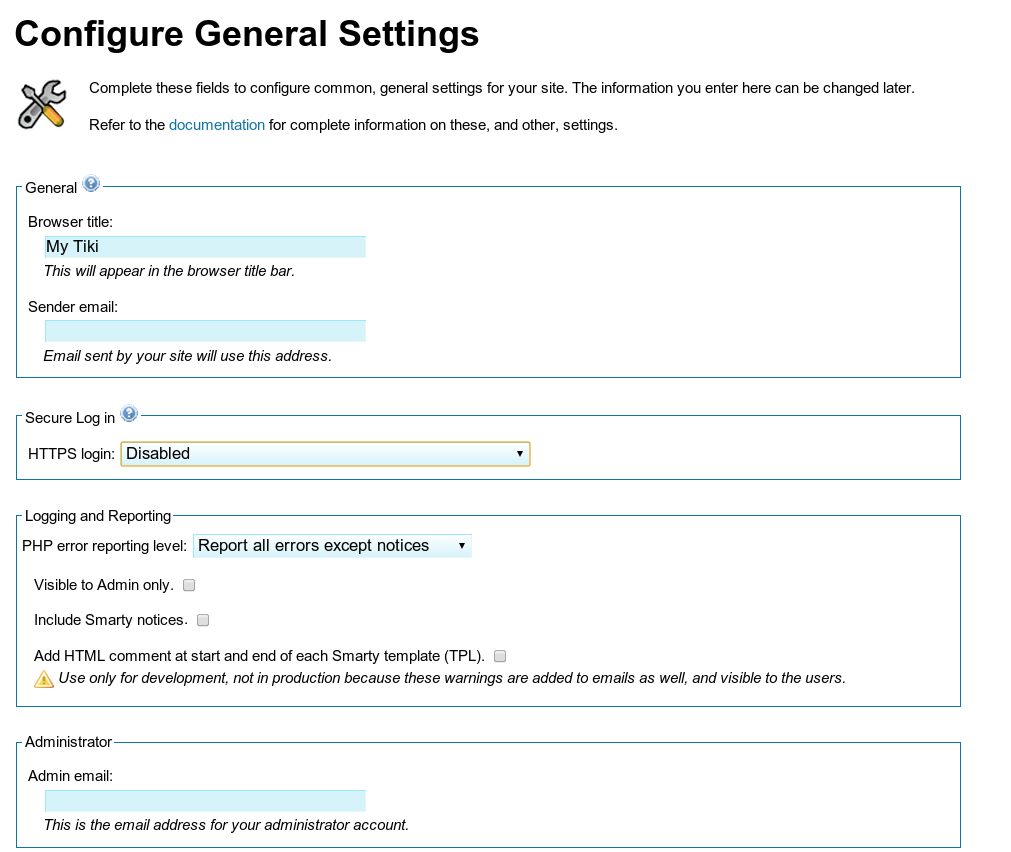 Next, Enter the Wiki and Lock Installer: 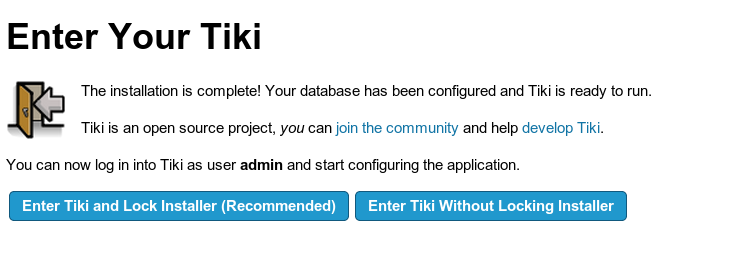 You will be required to change your admin password:  And you are all done! |
Attachments

There are no attachments for this article.
|
Docker Explained: How To Create Docker Containers Running Memcached
Viewed 8901 times since Sat, Jan 4, 2014
How To Configure Varnish for Drupal with Apache on Debian and Ubuntu
Viewed 7618 times since Thu, Jan 2, 2014
How To Setup ownCloud 5 On Ubuntu 12.10
Viewed 6052 times since Sat, Jan 4, 2014
How To Set Up vsftpd on Ubuntu 12.04
Viewed 2542 times since Thu, Dec 26, 2013
How to Setup a Multi-Protocol VPN Server Using SoftEther
Viewed 9954 times since Thu, Jan 2, 2014
How To Install (LEMP) nginx, MySQL, PHP stack on Arch Linux
Viewed 14012 times since Sun, Dec 29, 2013
How To Install Linux, Apache, MySQL, PHP (LAMP) stack on Debian
Viewed 8090 times since Thu, Dec 26, 2013
How To Create Nagios Plugins With PHP On Ubuntu 12.10
Viewed 2706 times since Sat, Jan 4, 2014
How To Install and Use Docker: Getting Started
Viewed 4165 times since Sat, Jan 4, 2014
How To Use ps, kill, and nice to Manage Processes in Linux
Viewed 3108 times since Thu, Dec 26, 2013
|
 Subscribe to Article
Subscribe to Article Print Article
Print Article-
 Email Article to Friend
Email Article to Friend
 Export to PDF
Export to PDF Export to MS Word
Export to MS Word Tweet This Article
Tweet This Article Digg It
Digg It Stumble Upon
Stumble Upon Del.icio.us
Del.icio.us
